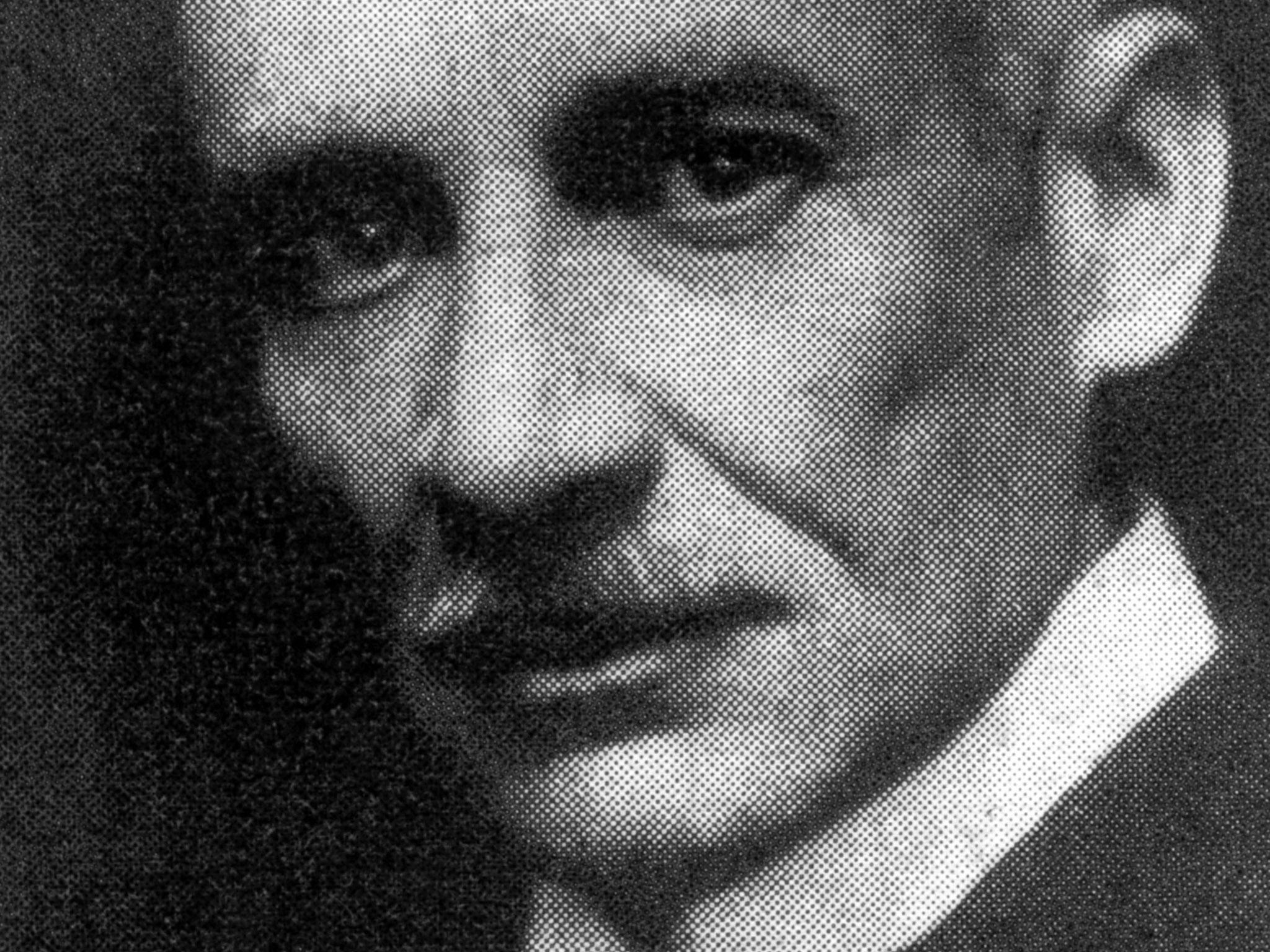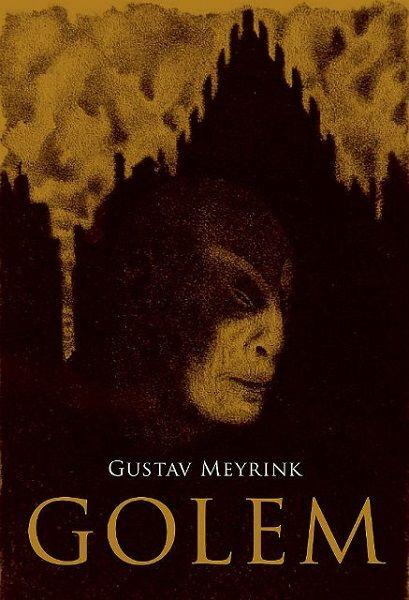Gustav Meyrink: The mysterious life of Kafka’s contemporary
On the 150th anniversary of the birth of this banker-turned-writer, all but unknown outside the German-language literati, David Barnett explores a life as dark and mysterious as his work

When he was 24 years old, a young Austrian banker living in Prague towards the close of the 19th Century put a revolver to his head, intending to take his own life.
Just before he pulled the trigger, a pamphlet entitled “The Afterlife” was pushed under the door of his rooms, distracting him from the task at hand. It was an esoteric treatise that, once it had stayed his hand from the fate he was about to inflict upon himself, set the young banker on a wholly different path; not only was he determined to live, but he would become a writer, and probe the mysteries of the universe.
That’s the story, anyway. The banker-turned-writer in question was Gustav Meyrink, and this year is the 150th anniversary of his birth. While feted among the German-speaking literati, Meyrink is at best a cult figure in the UK, far less well known than his contemporary Franz Kafka, but mining the same often fantastical seams of storytelling.
Gustav Meyrink was born in January 1868 in Vienna, the illegitimate son of a baron and an actress. His mother took him to live in Prague when he was an adolescent, where he went into partnership to establish his own banking company.
It was not many years into his financial career, in 1892, that Meyrink found himself in despair and suffered a nervous breakdown, which gave rise to his intention to end his life… until the mysterious intervention of an enigmatic stranger at his door.

But did the episode really happen? Meyrink recounted it, in fictionalised form, in a short story entitled “The Pilot”, and indeed suggested that this unseen figure had been summoned to his door – drawn by his pain, and helped, through occult means, to steer him through the stormy, rock-strewn seas he found himself in and onto calmer waters.
However, Meyrink was an arch self-promoter who liked nothing better than mythologising his own existence; the story is typical of the sort of thing he might have conjured up to add mystique to his own image.
Mike Mitchell is a translator of almost 90 books from German to English, and was responsible for bringing Meyrink’s novels to an English-reading audience in the 1990s through the specialist press Dedalus. He has also written a biography of the writer, entitled Vivo – The Life of Gustav Meyrink, which was published 10 years ago.
“Is the suicide story true?” muses Mitchell. “It is just the sort of thing he would have liked to be attached to him, he did like to encourage legends and stories to circulate around him. It’s impossible to tell whether it was true or not.”
Whether truth, fiction or some embellished version of fact, it is a nice way to describe the transition from banker to writer of weird fiction. And it helped that he lived and spent his early adulthood in Prague in the late 19th Century, for this was a magical, esoteric place which was home to Kafka and his brooding tales of oppression, darkness and transformation.
In his book Prague Pictures, the Irish writer John Banville observes, “Prague writers love to frighten themselves, especially the decadents of the late 19th and early 20th Centuries. They revel in the uncanny.”
Banville goes on to quote Angelo Maria Ripellino, the Italian author whose sublime Magic Prague is the definitive text on the weird literary landscape of Prague, who said that the fiction of Kafka, Meyrink and their ilk “is characterised by an oppressive recurrence of the Spanish-derived image of the crucifix, a gloomy tangle of wounds and rent limbs, a fountain of gushing blood, a spiritualist vision and a source of terror”.
Indeed, Meyrink’s novels could well be considered horror stories, but with a postmodern twist that spirals into philosophy and psychology and plays with tortuously labyrinthine ideas.
His most famous novel is The Golem, based loosely on the old Prague legend of the man of clay created by Rabbi Loew to protect the Jewish ghetto in the 16th Century, formed from the mud of the Vltava River which flows sluggishly through the centre of Prague, and given life by means of the shem, a tablet which bears the name of God. But Loew’s Golem ran riot after his creator forgot to take the shem from his mouth after a day’s work, and had to be destroyed.
Meyrink’s Golem is a different beast entirely, a strange entity which resurfaces in Prague every 33 years, and at the time the narrative is set appears to be a doppelgänger of the protagonist, a gem-engraver named Pernath, who finds himself plunged into a bureaucratic, expressionist nightmare as he is confused for the Golem who looks just like him, and eventually gets arrested for murder.
There are obvious parallels with Kafka’s stories of shadowy machinations working against the little man beyond his understanding, but there are also perhaps analogies with the way the Jews were treated in Europe at the time, as Pernath is shuttled from one place to another and becomes a hated, homeless figure.
Meyrink started writing the novel in 1907 and it was published in 1914, just as war was breaking out in Europe. There are obvious parallels in The Golem there, too, as dark shadows gather around Pernath and forces beyond his control move to affect his life.
Meyrink was often mistaken for a Jew, perhaps because he had mined the old folk-tale of the Golem for his first book, though he wasn’t. The Jewish ghetto was just one part of the city of Prague that left a mark on him and informed his writing.
Mitchell says, “Prague left a huge imprint on Meyrink. Not only the stories of Prague, but the architecture of the city as well. It all fascinated him and he used it to various effect in his fiction.”
In his story “The City with the Secret Heartbeat”, Meyrink wrote: “I lived in Prague, the city with the secret heartbeat. It has never entirely left me, even today it comes over me when I think back to Prague or dream of it at night.
“Everything I ever experienced I can call up in my mind’s eye as if it were there before me, bursting with life. If, however, I summon up Prague, it appears more clearly than anything else, so clearly, in fact, that it no longer seems real, but ghostly. Every person I know there turns into a ghost, an inhabitant of a realm that does not know death.”

The Golem sold phenomenally well – more than 200,000 copies in 1915 – and Meyrink went on to write a further four novels, The Angel of the West Window, The Green Face, Walpurgisnacht and The White Dominican.
The Green Face is ostensibly set in Amsterdam, but is almost indistinguishable from Meyrink’s descriptions of Prague in his other novels, and Walpurgisnacht in particular highlights the writer’s penchant for satire and political comment – which often got him into trouble.
Meyrink also wrote short stories, which were hugely loved among the young literary crowd in Prague and other German-speaking nations, even as they enraged the authorities. He was constantly taking a pop at authorities in his stories, which he dressed up in fantastical dressings or as ghost stories.
In fact, he drew the ire of the German nationalists towards the end of and just after the First World War, and at one point had to flee Prague and set up home for a while in Switzerland.
According to Mitchell, Meyrink’s love of the mystical and fantastical in his writing has led some academics to dismiss him, branding his stories “cheap horror”. But Mitchell argues: “I would certainly categorise him as a major figure in Kafka’s Prague.”
Despite his early career in banking – or maybe because of his failure in it – Meyrink was constantly in money troubles in later life. He had a serious interest in the occult and the paranormal, but conversely also spent considerable amounts of time debunking charlatans who practised in the realms of spiritualism and mysticism.
And even the oeuvre of this master self-publicist is open to doubt in some respects. It’s been claimed that his novel The Angel of the West Window, which is Meyrink’s longest work and which intertwines the story of Queen Elizabeth I’s court magician Dr John Dee – a regular visitor to Prague in the late 16th Century – with a contemporary man who believes he is becoming possessed by the great magician, might not actually be Meyrink’s work at all.
Mitchell says, “It has been said that a neighbour of Meyrink actually wrote it and agreed for it to be published under the writer’s name, which was more well known, and that they should split the profits.”
It’s perhaps as typical a story surrounding the mysterious Mr Meyrink as the one about his supposed suicide attempt which set him off on becoming one of the most interesting and under-appreciated authors of the early 20th Century.
Gustav Meyrink died in 1932, six months after his own son had killed himself at the age of 24… the same age that Meyrink was when he claimed to have been about to end his own life. It’s a tragic, but somehow appropriate note upon which the life of this fascinating writer was brought to a close.
Join our commenting forum
Join thought-provoking conversations, follow other Independent readers and see their replies
Comments